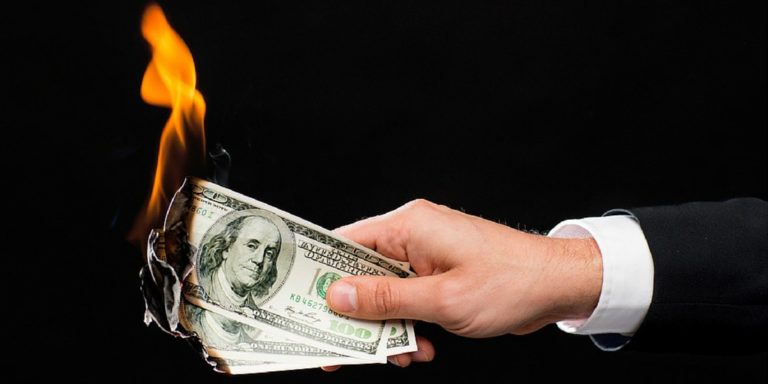Budgets are tight, regulations are tougher, and audiences are looking for more value than ever. The event trends of 2025 are here to raise the stakes.
Attendees aren’t just looking for another conference badge or a night of networking. They’re chasing growth, connection, and moments that feel worth the time and money. Gen Z is showing up with new expectations. Regulators are raising the bar on accessibility and sustainability. And organizers? They’re being asked to do more, and still keep the magic alive.
This article gives you a clear look at the event trends shaping 2025, from leveraging AI tools and enhancing community-building to compliance and new attendee behaviors. You’ll see not only what’s changing, but also what to do about it so your events stay relevant, impactful, and future-proof.
What attendees want now
Before looking at the event trends shaping 2025, it helps to zoom in on what audiences are actually asking for. After all, trends don’t appear in a vacuum—they’re a response to attendee desires and behaviors.
- Attendees want growth: events that help them learn, network, and build their careers.
- They want escape: moments that take them outside daily routines, whether through wellness workshops, outdoor adventures, or cultural experiences.Â
- They want belonging: community that extends beyond the event itself.Â
- They want discovery: events that are easy to find in the same places they already explore, like TikTok or Instagram.
For organizers, these desires set the agenda. The event trends we’ll explore next are the industry’s answer to these expectations. They are designed to keep audiences engaged, inspired, and coming back.
The event trends shaping 2025
Every new year brings a wave of predictions, but not all of them stick. The event trends of 2025 feel different, shaped by shifting attendee expectations, new regulations, and the ongoing demand to prove value. Here are the 15 event trends to look out for:Â
Trend 1: Personal growth as a draw
In 2025, events that help people grow, professionally or personally, are seeing strong demand. Career networking nights, skills-based workshops, and learning-driven meetups are attracting audiences across generations, not just Gen Z. For many, the promise of growth is what turns an event from “interesting” into “essential.”
This makes personal development programming a central pillar rather than a side track. Whether it’s a conference that doubles as a career accelerator, a festival with wellness sessions integrated in, or a meetup built around learning something new, attendees expect to leave with more than they came: new skills, connections, and inspiration
Trend 2: gen z redefines experiences
Driven by Gen Z’s influence, event planning trends are evolving to reflect a new set of priorities and values. Gen Z isn’t just attending; they’re reshaping the definition of what an event should be. They’re drawn to formats that feel authentic, growth-oriented, and fun in new ways: from wellness workshops and career networking nights to outdoor escapes and music-inspired parties.
Gen Z also expects experiences to feel open, fair, and welcoming. That means designing formats where everyone feels included without losing the energy or fun.If an event resonates with them, Gen Z will engage deeply and expand its reach through their networks.
Trend 3: Escapism and outdoor experiences
At the same time, audiences are craving release. With daily life often heavy and fast-paced, many turn to events for a sense of reset. Outdoor fitness meetups, wellness retreats, and hiking groups are becoming just as popular as traditional conferences or expos.
This event trend taps into escapism in the best sense, using events to reconnect with nature, community, and personal well-being. It also makes events feel more accessible, since they can happen in parks, local trails, or unique outdoor spaces. For organizers, building in wellness or outdoor experiences is no longer niche; it’s part of how events compete for attention in 2025.
Trend 4: Cultural moments and niche communities
Pop culture is driving a new wave of gatherings. From retro-themed nights to fandom-driven events tied to music, TV, or internet culture, audiences want to connect over the things they love most. These creative event themes may be smaller in scale, but the energy and loyalty they generate are outsized.
Organizers who act quickly can ride the momentum of cultural trends, tapping into shared passions with creative programming. Whether it’s a themed spin class, a music-inspired pop-up, or a fan-driven micro-festival, these experiences feel timely and magnetic. In 2025, event industry trends aren’t only about scale but about resonance, and niche culture is leading the way.
Trend 5: community as currency
Networking has evolved from handing out business cards to building real communities. Attendees don’t just want to meet once; they want to belong. Events that create that sense of community see stronger loyalty, better word-of-mouth, and higher long-term value.
For organizers, this means designing not only the event, but the afterlife of the event: Slack groups, follow-up meetups, private forums, or simply ongoing touchpoints that let people stay connected. In 2025, the community you grow can be as valuable as the tickets you sell.
Trend 6: commerce comes first
Events have always been about connection, but in 2025, attendees are walking through the door with one question: what can I take away that moves me forward today? That means less fluff and more substance. A well-designed event in 2025 feels less like a spectacle and more like a marketplace of ideas, products, and transactions.
For organizers, this is a shift in mindset. A great event is transactional in the best sense of the word. Think pop-up buyer lounges where questions get answered, test zones where products can be experienced hands-on, or deal-flow sessions where business actually happens on site. Experience still matters, but it’s the commerce layer that leaves attendees saying, “This was worth it.” In the landscape of event trends, this is one of the clearest shifts.
Trend 7: AI moves from hype to everyday tool
Among event industry trends, AI is shifting from flash to function. It is no longer the headline; it’s the utility layer beneath the event. Organizers are quietly using it to plan agendas, match attendees with peers, analyze feedback, and even streamline check-in. The real question for 2025 isn’t if you’ll use AI, but where it delivers the most impact. Done well, most attendees won’t even notice it’s there.
The strategic edge is in selective adoption. Overloading on automation risks making events feel robotic, while thoughtful applications create smoother, smarter experiences. Transparency helps too, letting attendees know when recommendations or match-ups are AI-powered, builds trust.
AI event tools from Events.com make this shift practical. Instead of just handling logistics, they help with creative tasks too, like generating event ideas, crafting memorable event names, writing icebreaker questions, or even building a full run of show. By taking the busywork off your plate, these tools free organizers to focus on designing experiences that feel human and engaging.
And for those looking ahead, our State of XR and AR in Events report shows how AI is increasingly intertwined with immersive tech, hinting at the next wave of innovation.
Trend 8: accessibility is non-negotiable
The conversation around accessibility has shifted. What was once seen as a nice touch is now a hard requirement, especially in Europe, where new laws demand that ticketing systems, event apps, and digital platforms meet accessibility standards. But beyond compliance, the reality is simple: an event that isn’t inclusive leaves people behind, and attendees in 2025 won’t stand for it.
Among trends in events, this one blends legal necessity with a genuine chance to expand reach. Organizers who bake accessibility in from day one will unlock new audiences and avoid last-minute fixes. From captioned sessions to mobile-friendly apps to venues that support mobility needs, accessibility turns from a checklist into an opportunity: to welcome more people, and make every attendee feel like the event was designed with them in mind. Keeping event accessibility tips in mind while designing an event is a popular trend this year.
Trend 9: sustainability becomes reportable
In 2025, companies are being asked to account for the carbon impact of travel, venues, catering, and production, and to publish those numbers. That makes sustainability less about swapping plastic straws for paper and more about measurable impact.
Organizers who stay ahead are weaving sustainability into planning from day one: choosing venues with renewable energy, tracking waste streams, offering hybrid attendance where it reduces travel, and partnering with suppliers who can report their own practices. For attendees, it signals responsibility. For organizers, it’s becoming part of the bottom line, underscoring the growing importance of sustainable events in the industry.
Trend 10: data without the drama
Events remain a goldmine of insights, but more data isn’t always better. In fact, drowning in numbers often makes it harder to act. Attendees don’t want to feel like they’re under a microscope either; they want clear, relevant value in exchange for their information. As event trends evolve, clarity and simplicity are winning over complexity.
For organizers, the smart play is to focus on the key event metrics: What’s actually being attended? Which content sparks engagement? Where are connections being made? Keep it simple, clean, and actionable. That’s why platforms like Events.com Insights put all the data you need at your fingertips, from ticket sales and promo code performance to attendee demographics and engagement patterns. With customizable reports and real-time dashboards, you can track only the metrics that matter and turn them into faster, better decisions.
Less noise, more clarity, that’s how event data will prove its worth in 2025.
Trend 11: the rise of small and local
Big flagships aren’t going away, but they’re no longer the only game in town. Local, small events are booming because they feel more personal, easier to attend, and often more affordable. Think intimate dinners, small pop-up events, or city meetups that bring the brand closer to its audience.
For organizers, these smaller formats offer agility. They’re quicker to plan, lighter on event budget, and easier to test. And when done well, they keep your community engaged between the big headline events, like chapters in an ongoing story rather than one-off shows. Of all the event trends in 2025, this one shows how scale is shifting toward intimacy.
Trend 12: content as a year-round asset
In 2025, an event isn’t over when the last attendee leaves the room. Every panel, workshop, or keynote can live on as podcasts, articles, social clips, or training modules. Content is becoming the fuel that keeps engagement alive all year long.
The smartest organizers plan for this upfront. They brief speakers on rights, design sessions for capture, and build release calendars that stretch weeks beyond the event. As part of this, knowing how to develop an event content strategy ensures every stage moment ripples across newsletters, LinkedIn posts, or even sales enablement decks, making your event the engine of an entire marketing ecosystem. Few event trends have as much long-term payoff as this one.
Trend 13: discovery goes social
The old formula, which involves sending an email, posting on a website, and waiting for registrations, is losing its grip. Younger audiences are finding events on TikTok, Instagram, and other social-first channels. In many ways, TikTok has become the new search engine for live experiences.
For organizers, this means meeting people where they already are. Short, authentic content often beats polished campaigns, learning how to leverage influencer marketing, and partnering with creators can amplify reach far more than traditional ads. With Events.com Promote, you can manage digital marketing in one place, launching campaigns across Facebook, Instagram, Google, and more in just a few clicks, so your event shows up where your audiences are already scrolling.
In 2025, if your event can’t be found on social media, for many audiences, it doesn’t exist.
Trend 14: budgets stabilize, but attendees book late
The good news: travel and venue costs are leveling off after years of volatility. The tricky part: attendees are waiting until the last moment to commit. Early bird deals aren’t what they used to be; the new norm is late surges in ticket sales.
For organizers, this means being ready for a sprint at the end. Marketing needs strong final pushes, and operations need to handle late sign-ups smoothly. Flexibility is the name of the game. Planning for procrastination reduces stress when registrations spike in the final weeks. Among 2025 event trends, this one is about timing more than tactics.
Trend 15: safety and trust take center stage
In a world of rising digital scams and heightened on-site concerns, attendees want to feel secure at every step. From phishing attempts that mimic ticketing emails to visible venue security, trust is now part of the experience.
That makes safety both a responsibility and an opportunity for event teams. By putting clear communication front and center, using tamper-proof check-in processes, and strengthening digital protections, organizers show safety isn’t an afterthought. And when attendees feel secure, they engage more freely, and are far more likely to return.
What this means for organizers
A list of event trends is only useful if it helps you make better decisions. The point isn’t to chase all ideas at once, but to use them as a lens for planning your own program in 2025.
Here’s how to turn the trends into a playbook:
- Plan with clarity: Look at the trends as signals, not mandates. Which align with your event goals? Which connects most with your audience? Prioritize those instead of spreading yourself thin. Practical tools like the AI agenda and run of show generator by Events.com make it easier to build structured plans that align with your strategy, without spending hours on manual formatting.
- Design for people: Many of this year’s trends point back to human needs: growth, belonging, safety, and inspiration. Use the list as a reminder that even with AI and compliance in the mix, events succeed when they serve people first.
- Deliver with proof: Trends like sustainability, accessibility, and data aren’t abstract. They’re about showing measurable impact. Use them as prompts to build reporting and accountability into your planning from day one.
- Extend the life: Content, community, and smaller activations mean your event doesn’t end when the lights go out. Think of the trends as opportunities to stretch the value of each gathering into something that lasts all year.
Turning trends into action
While exploring where the industry is headed, the event trends of 2025 are also a reminder that the rules of the game are changing. Attendees are asking for more, regulators are demanding more, and technology is putting forth new possibilities every day. The real challenge isn’t spotting trends but acting on them in ways that make events more meaningful, more inclusive, and more resilient.
For organizers, the takeaway is simple: you don’t have to do everything, but you do need the right tools and partners to do the things that matter. That’s where Events.com comes in. Whether you’re running a flagship conference, scaling micro-events, or building year-round communities, Events.com gives you a platform to manage registration, ticketing, promotion, and engagement, all in one place.
2025 will reward organizers who stay focused, adaptive, and bold. Book a demo with Events.com to see how you can host events that don’t just ride the wave of these trends, but set the standard for what comes next.
Frequently asked questions about event trends
1. What are some current trends in the sport and event industry?
Sports and events are embracing immersive fan experiences, sustainability, and hybrid formats. Personalization through data, wellness activations, and stronger safety measures are also shaping how fans engage in 2025.
2. How can event trends improve ROI?
Event trends like commerce-first floor plans, smarter data use, and year-round content strategies help organizers prove value. They connect attendee engagement directly to sales, sponsorships, and loyalty.
3. Which technologies are most important for events in 2025?
AI-powered matchmaking, accessibility tools, and social media integrations are must-haves. Platforms that simplify ticketing, analytics, and content repurposing give organizers the biggest edge.
4. Why should organizers follow event trends?
Event trends highlight how audience expectations, technology, and regulations are changing. Staying ahead helps organizers design experiences that feel relevant, competitive, and future-proof.







